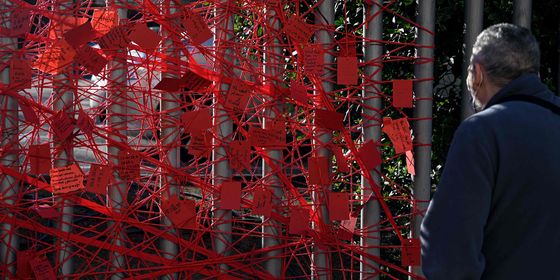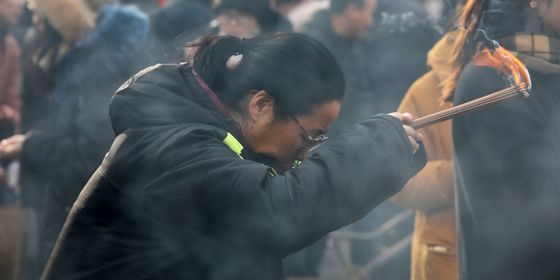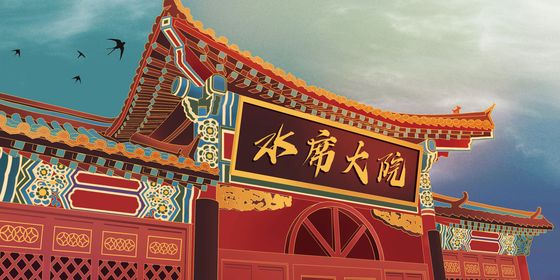The line between cultural appropriation and fusion remains fuzzy for Chinese and overseas foodies
A Manhattan health coach and Instagram influencer, who believes Chinese food is “too oily” and leaves her “bloated and icky,” was shocked to find herself seared by social-media critique earlier this month after she and her husband opened a New York restaurant with an Asian-style name and décor.
“Lucky Lee’s”—kitted with bamboo and jade, a “chopsticks” font, and proposed a stencil offering “Wok in, Take Out”—is aimed at “people that had certain dietary requirements.”
It’s the latest row over cultural appropriation, which is merely the most recent expression of a never-ending struggle over power—losing it, reclaiming it, and, particularly in this case, casually flaunting it. A pair of privileged poseurs implying that their restaurant is both authentic and superior to the real thing (“There are very few American-Chinese places as mindful about the quality of ingredients as we are,” the pair first told Eater) practically embodies the definition of the term.
However, the practice is rarely well-understood in countries, such as China, where the “minority” culture under appropriation is actually the majority. Compared with fashion brouhahas like the 2015 Met Gala or 2018’s “Qipao Girl,” culinary appropriation is actually the less divisive flashpoint for Chinese and their overseas compatriots: Both groups condemned 2017’s Time Out London xiaolongbao video, which directed British diners to pop the soup-filled dumpling “like a pimple,” for being inaccurate as well as disrespectful of indigenous dining traditions that call for the dumplings to be savored whole, with the soup slurped slowly.
Similarly, when century eggs were labeled “unfit for human consumption” by Italian inspectors earlier this month, Chinese netizens took umbrage at the ignorance and lack of respect for their delicacies (although it’s been reported that the uncooked eggs are soaked in potentially toxic lead and copper).
The major difference, though, is that Time Out and that Italian authorities had offended by obviously misrepresenting and insulting Chinese food—while it’s less clear whether non-Chinese attempts to make Chinese fare mainstream should be seen as a source of pride, or a confirmation of a lack of understanding of the cuisine and respect for its original cooks.
For immigrants growing up in in many Western societies, food can be both personal and political. Faced with the pressure to assimilate, food is both a source of cultural pride, and something which marks their “otherness” in their adopted countries. It thus becomes galling when dishes for which minorities had ridiculed become acceptable or trendy after they are feted by white foodies, and fondly remembered home-cooking is used to build up the brand of white chefs.
In China, on the other hand, there is diverse representation of foods enjoyed by different regions. The frequent spats over the correct way to serve jianbing, or which province can lay claim to inventing certain dishes, tend to be fights among equals rather than a demonstration of one region’s greater social capital over another (with the possible exception of the south’s resistance against dumplings, a northern export).
Also in China, the lines of “authentic” in cooking are being constantly and actively redrawn by local cooks based on conditions within the country. “In China, the way we used to cook was very different, because we were quite poor and certain ingredients weren’t available. Today, Chinese chefs and restaurateurs serve far more beef, dairy and fat now, and less veg,” American-Chinese chef Ken Hom told The Telegraph.
The East Meets West author also defends Gordon Ramsay’s new London restaurant, Lucky Cat, which has been criticized for promising an authentic “Asian experience” despite not having an Asian chef. Arguing that food cannot be “dictated” and that cross-cultural borrowing is inevitable, Hom does caution Ramsay not to experiment with what he doesn’t understand (while offering up himself as a consultant to the new venture).
However, the perspective from a veteran chef arguably misses the point of the critique, which focuses on the limited opportunities for the majority of less-established ethnic chefs and immigrant restaurant-owners to make significant profit from their own culture’s cuisine, or conversely, cook dishes from outside their culture (as of 2016, 90 percent of recipes listed by The New York Times as “Chinese” were written by white authors).
Likewise, when Travel Channel host Andrew Zimmern mocked Midwestern Chinese-American food by opening “Lucky Cricket” (as food writer Cathy Erway tweeted, “Lucky is becoming code for something awful”), he overlooked the point that immigrant restaurateurs only started serving deep-fried foods with thick sauces to appeal to mainstream American diners, not because they lacked the taste for healthier or more refined fare (and that most restaurants were started by non-chefs due to racist laws that restricted the kinds of businesses that Chinese could operate).
As Chinese begin traveling abroad in increasing numbers, and Chinese food becomes more popular and influential around the world, foodies on the mainland will likely find themselves drawn into this ongoing debate. Whether it’s non-Chinese chefs going into commercial Chinese cooking, or mainland travelers bemused that food “ownership” can create so much controversy, everyone could start by paying heed to the advice of writer Ruth Tam: “Don’t insult the restaurants, chefs and diners…and in true Chinese tradition, honor the past as you look forward.”
Cover image by Clem Onojeghuo from Pexels












